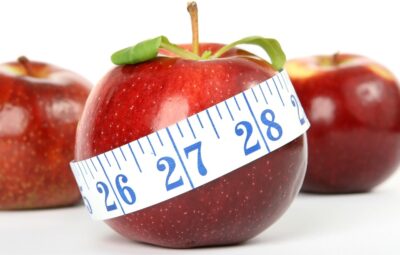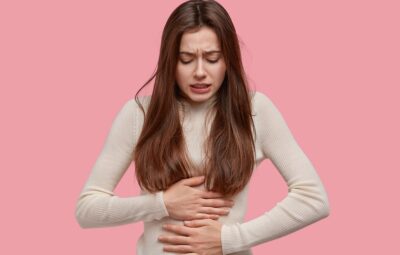The World Health Organization (WHO), the American Society for Reproductive Medicine (ASRM), and the American College of Obstetricians and Gynecologists (ACOG) all understand infertility as a medical condition.
Infertility is a condition experienced by roughly one in eight couples that occurs when a couple has not been able to get pregnant after a year of having unprotected intercourse.
Almost 90 percent of male infertility is caused by a low semen quantity or a bad quality of semen, while the other 10 percent is caused by structural issues, hormonal discrepancies, inherited impairments, or some other issues. It is essential for fertility and the wellbeing of a maternity that 3 sperm irregularities exist.
A great deal of emphasis has been placed on women taking care of themselves before they become pregnant, but studies have shown that it is also important for men to look after themselves as well in order to avoid birth defects, miscarriages, and infertility.
Recent studies suggest that engaging in physical activity may enhance the amount and quality of sperm in men who previously led a less active lifestyle.
Exercise May Improve Sperm Quality and Quantity
In Iran, a research study was conducted to investigate the impact of exercise at four diverse intensity levels on the sperm quality of inactive males. From the couples going through infertility, approximately one-third of them are due to low sperm quality.
In this research project, scientists from Urmia University observed the semen of 261 individuals who were all in good health for a duration of six months.
The group of people chosen for the study had to be between twenty-five and forty years old, in good health, and without any prior experience of working out. They were then separated into the following four groups:
- No exercise
- Three workouts a week of high-intensity training on a treadmill (HIIT).
- Three workouts a week of 30 minutes of moderate-intensity continuous training on a treadmill (MICT).
- Three workouts a week of one-hour high-intensity continuous training on a treadmill (HICT).
The researchers collected semen samples at three different points in time, which were prior to, during, and after a six-month exercise period. The semen was examined to measure sperm motility, size, morphology, count, semen volume, and the presence of inflammatory markers.
After 24 weeks, the MICT group achieved the greatest progress, and the HICT and HIIT groups saw beneficial results in comparison to the non-exercising group.
The MICT group experienced an increase of greater than 8 percent in their semen volume, a 12 percent enhancement in their sperm motility, a 17 percent upsurge in morphology, and a rise of just over 21 percent in their average sperm cells.
Despite the men enjoying the improvements from the exercise program, the sperm count, concentration, and morphology regressed to their original numbers within one week of concluding the program. Lead author of the study, Behzad Hajizadeh Maleki, commented:
The evidence demonstrates that engaging in physical activity can be an economical and effective technique for boosting the quality of sperm in inactive males.
It is essential to recognize that infertility in men is not necessarily attributed exclusively to semen quality. The intricacies of male infertility can be hard to pin down, and simply shifting habits may not provide a solution in every situation.
Moderate Exercise Increases Sperm Quality
The authors hypothesized that the men in the study probably saw a betterment of sperm quality from the weight loss they experienced in the six months, particularly for those who took part in MICT because it cuts down on their exposure to oxidative stress and inflammatory agents.
It has been concluded by scientists that various factors, such as electromagnetic fields, excessive heat, inadequate nutrition, carrying extra weight, substance abuse, and biking, can reduce the quality of sperm. It has been theorized that by eliminating these negative factors and focusing on improving overall health, the quality of sperm would also improve.
A research of 31 people was conducted, 16 of which were active in assorted activities (other than biking) and 15 inactive. The evaluation of the sperm quality was of a shorter length and 11 of the participants had their sperm quality measured by the parameters set by the World Health Organization (WHO), including the volume, number, motility and shape.
The study showed that males who engaged in physical activities had a larger quantity of sperm, an augmented quantity of semen, and a higher ratio of sperm with regular structure.
Previously, the same researchers noted that males who took part in vigorous physical activity seemed to have lower sperm quality, while those performing moderate exercise seemed to have better sperm quality.
It was determined by scientists in the latest investigation that there were better outcomes attained when moderate exercise was done, as set out in the study. The researchers commented:
This investigation has built further upon existing evidence, discovering that markers of inflammation and oxidative stress enhance dramatically after completing either moderate-intensity continuous training, high-intensity continuous training or high-intensity interval training for 24 weeks, with these changes parallel to positive refinements to semen quality measures and sperm DNA steadiness.
These findings suggest MICT was more successful in improving male reproductive performance markers, relative to HICT and HIIT.
It appears that the amount of exercise a person does, how long they exercise and what kind of activity they do should be considered when studying the effects of exercise on male reproduction.
Male Infertility Responsible for 30 Percent of Cases
Dr. Allan Pacey, who is a fellow of the Royal College of Obstetricians and Gynecologists and an advocate for the British Fertility Society, holds the esteemed post of professor of andrology at the University of Sheffield. He also commented on the research results and how they may affect fertility:
This study adds valuable information to the existing body of understanding. This study is excellently designed and beneficial because it is a randomized control trial with comprehensive data collection.
The research also looks at how physical activity impacts numerous elements of male reproductive well-being, not just sperm quality. The outcomes regarding sperm quality are expected to be the most fascinating to both men and their medical experts.
It is noteworthy that when men adopted various exercise plans, they seemed to have a statistically observable benefit in comparison with men who did not exercise at all. An important inquiry that must be considered is whether the alterations in the statistical data are sufficient to make a meaningful impact in a clinical context.
Approximately one third of all infertility issues are attributed to male problems. Around 40-50% of cases of a poor sperm quality in males is unaccounted for and are attributed to unknown factors out of the four main causes of male infertility. Infertility in males is a complicated issue which involves the well-being of sperm as well as the physiological functioning of the male reproductive organs.
A semen sample analysis, blood tests, physical exam, and assessment for active or previous infections are all methods to detect male infertility. It can be very discouraging for a couple who is attempting to get pregnant, but the danger of poor sperm quality is not just linked to being unable to conceive.
What Factors Contribute to a Low Sperm Count?
Having less than 15 million sperm cells in a millilitre of semen is known as oligospermia, or a low sperm count. Meanwhile, a complete absence of sperm is called azoospermia.
Having a low number of sperm is a major contributor to barrenness. It lowers the chances that one of your sperm cells will unite with your partner’s egg to cause a conception.
You may be prone to oligospermia due to a combination of medical, genetic, environmental, and lifestyle issues.
Medical and Genetic Risk Factors:
Certain infections may lead to a decrease in sperm production or reduce the quality of sperm cells. In certain situations, the disease may obstruct the passage of sperm. These infections may target the epididymis or the testicles. STIs, including gonorrhoea, may be a factor in a reduced sperm count.
A varicocele is an swelling of the veins in the sack that carry blood away from the testicles. This issue could lead to a decrease in the caliber of sperm cells, however, it is reversible and can be treated.
In autoimmune disease, the body’s immune system may mistakenly create antibodies that target and harm sperm cells. It mistakenly thinks that sperm are dangerous and tries to destroy them.
Difficulties with ejaculation may lead to a low sperm count. For example, retrograde ejaculation occurs when semen is discharged into the bladder as opposed to being expelled from the end of the penis. Health issues like spinal trauma, diabetes, and operations for the prostate, bladder, or urethra might be present. Certain medications can lead to an inability to ejaculate, such as alpha-blockers, which are anti-hypertensive drugs also known as Alpha-adrenoreceptor antagonists.
Issues with the tubes that move sperm have the capacity to result in a low sperm count. The clogging of these tubes can be caused by various causes, including surgical operations, prior infections, irregular growth, and trauma.
The testes create hormones that are indispensable for the manufacture of sperm. Other components that aid in the procedure are the hypothalamus and the pituitary gland. Imbalances in these hormones may impair sperm production.
Testicles that have not properly descended during fetal growth in the mother’s womb might end up in the abdomen rather than in the scrotum, which is the pouch that encloses the testicles.
Genetic disorders like Klinefelter’s syndrome, where a male has two X chromosomes and a single Y chromosome in place of the usual single X and Y chromosome, can lead to difficulties in the development of his reproductive organs. Maladies that can be passed down from parents that could potentially impact sperm generation and movement consist of Kallman’s disease, cystic fibrosis, and Kartagener’s syndrome.
Medications – Some medicines can alter sperm production. This could be rephrased as: Examples of treatments may include obtaining testosterone supplements, continuous utilization of steroids, taking anti-fungal/anti-bacterial drugs, undergoing chemotherapy, and utilizing certain medications for ulcers.
Lifestyle Risk Factors
- Heavy drug and alcohol use
- Cigarette smoking or vaping
- Use of anabolic steroids, which are taken to increase muscle mass
- Use of opioids and other illicit drugs
- Testosterone boosters
- Jobs requiring too much sitting
- Stress and depression
- Obesity
Environmental Risk Factors
- Exposure to lead and other heavy metals
- Exposure to X-rays and radiation at high doses
- Long-term exposure to certain chemicals, such as organic solvents, painting materials, and pesticides.
- Too much heat exposure of the scrotum area
How to Boost Sperm Count and Other Parameters?
It is crucial to understand how to make notations for the figures once you comprehend semen assessment and the specifications calculated. Increasing male fertility and sperm count can be done utilizing natural treatments. Here are a few methods.
Regular physical activity can be beneficial for overall health, as well as for a man’s fertility and testosterone levels. Exercising consistently can help increase testosterone and gestation potential. Evidence from certain research indicates that men who engage in physical activity on a regular basis tend to possess higher testosterone levels, as well as improved reproductive capabilities. An example of this can be demonstrated by a study which revealed that men who get physical exercise tend to have more healthy semen production.
Make sure to get an adequate amount of rest and sleep – Experiencing exhaustion or not getting enough rest can have a wide range of adverse effects on one’s health. Not getting enough sleep and rest may lead to heightened tension, which may in turn diminish sensations of pleasure related to sex and impair a person’s ability to reproduce. Prolonged stress can also affect testosterone levels.
Drop those extra pounds – Carrying excess weight increases the risk of having lower sperm counts. Drop pounds by selecting nutritious food items, following a balanced diet, and participating in regular physical activity.
Abstain from smoking tobacco and reduce alcohol consumption – If possible risk factors are taken away, such as smoking cigarettes and drinking too much alcohol, sperm quality will also improve.
It is advisable to speak with a doctor if you need to take a medication that may potentially lower your sperm count. Your physician might be able to substitute the treatment for a different one.
It might be a good idea to incorporate nutritional supplements into your diet. Examples might include CoQ10, vitamin C, vitamin E, zinc, folic acid, selenium, fish oil, and R alpha lipoic acid; these supplements have been known to increase sperm count. The utilization of these antioxidants may aid in reducing genetic damage to sperm, resulting in better sperm quality. It has been proven in multiple studies that taking antioxidants can escalate the overall amount, shape, movement, and genetic consistency of sperm cells.
Other supplements which may be useful for increasing sperm count are Profertil and Proxeed. Profertil is a product which has been scientifically evaluated and commercially released to improve sperm quality and address male sterility. At the same time, Proxeed is a dietary supplement created to boost fertility in grown men.
Consuming a healthy and balanced meal consisting of foods high in antioxidants and other essential vitamins and minerals can help increase sperm health. Eat more fruits and vegetables to raise your levels of vitamins and antioxidants. Decrease your consumption of sugar and beef, and up your intake of unprocessed whole grains and seafood.
Limit your contact with heat – Refrain from taking excessively hot showers or baths, such as in saunas, jacuzzis, and hot springs to stop any harm from being done to the sperms covered by the scrotum area. Be sure to put on garments that fit comfortably and steer clear of tight undergarments to maintain an icy scrotal region.
Takeaway
Male infertility is a growing problem among adult men. Discussing with a fertility specialist is essential to analyze the seriousness of the issue and take control of it in the beginning.
A sperm analysis is only one of the exams needed as part of a thorough fertility examination for males. In many scenarios, the infertility of men can be treated and reversed through lifestyle alterations, taking nutrient enhancements, tablets, medical procedures, and other methods of intervention.
We would be pleased to give you any help you desire in understanding male infertility and semen analysis.






